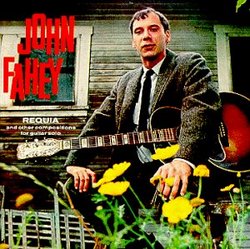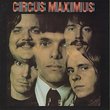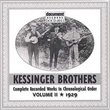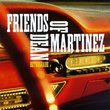| All Artists: John Fahey Title: Requia & Other Compositions for Guitar Solo Members Wishing: 3 Total Copies: 0 Label: Vanguard Records Release Date: 5/27/1997 Genres: Country, Blues, Folk, International Music, Jazz, Pop Styles: Traditional Blues, Traditional Folk, Contemporary Folk Number of Discs: 1 SwapaCD Credits: 1 UPCs: 015707925921, 0090204543472, 090204543472, 4024572122348 |
Search - John Fahey :: Requia & Other Compositions for Guitar Solo
 | John Fahey Requia & Other Compositions for Guitar Solo Genres: Country, Blues, Folk, International Music, Jazz, Pop
John Fahey's extended experimentations decades later with avant-garde's music elite is foreshadowed on 1967's adventurous Requia. These moody, contemplative instrumental works (all featuring Fahey at his guitar-playing pea... more » |
Larger Image |
CD DetailsSynopsis
Amazon.com essential recording John Fahey's extended experimentations decades later with avant-garde's music elite is foreshadowed on 1967's adventurous Requia. These moody, contemplative instrumental works (all featuring Fahey at his guitar-playing peak) resonate with passion, artistry, and--most of all--soul. "When the Catfish Is in Bloom" gradually crescendoes with Fahey's increasing, breakneck tempo, which--around the six-minute mark--becomes a blur of impossible fingerpicking that is both awe-inspiring and swinging. In the first part of "Requiem for Molly," the listener is bombarded by sound samples and tape loops, with Fahey slowly finding his chords. But the guitarist doesn't just noodle; he lets the composition slowly unfold, with humorous found-sound samples abounding and enough familiar guitar themes creeping up to keep you on guard. By part 3 Fahey reaches his most melancholy moment, letting out a methodical rendition of "California Dreaming" on top of lion roars and human screams. Though Fahey's playing influenced an entire generation of talented young guitar pickers, including Leo Kottke, his conceptual prowess goes unmatched here. A truly seminal recording. --Jason Verlinde Similar CDs
|
CD ReviewsThis 1967 Recording Does Not Age Well Ian J. Blynn | Camp Hill, PA USA | 02/03/2000 (2 out of 5 stars) "I like and admire John Fahey's guitar playing, but the found noise or musique concrete or whatever you want to call it that drowns out a good portion of this recording is unlistenable. When I heard the first such slogged-up cut, I thought, 'oh alright, I can get through this' -- but then there were three more, comprising about half the record. Who can listen to this? I want guitar playing, not failed musical experimentation at my expense." A misunderstood album by the master Nobody important | 05/19/2000 (4 out of 5 stars) "Let me first say that John Fahey is one of my all-time favorite musicians and composers. This album, however, is a peculiarity. Long before Fahey started truly delving into the realm of avante-guard (I really hate that term), he took a first step with the 4 part "Requiem for Molly," (the rest of the album is Fahey in his usual style). It basically sounds like a bunch of weird random noises layered over an interesting guitar line. I never understood exactly where Fahey was going with that. I didn't until I heard Steve Tibbetts, anyway. Steve Tibbetts, like Fahey, is a highly skilled guitarist who uses his technical prowess not as a crutch for bad writing, but as an integral part of his compositions, which are among the most beautiful and complex pieces this side of Bach. Steve Tibbetts' first album, while it lacks the complexity of his later works, showed me the potential of combining the organic sound of acoustic guitars with seemingly inappropriate electronic sounds, and he made it work. I don't think Fahey pulled it off on this album, but he gets points for creativity. Requiem for Molly is more of an historical artifact than a piece that stands the test of time, but it is worth owning for that alone. Besides, the rest of the album is Fahey in top form." Synthesis of the old and the new Jack W. Erter | Nashville, TN | 02/23/1999 (4 out of 5 stars) "John Fahey has finally arrived at his (pre)destination - that of a cultural icon and purveyor of the lost sounds of yesterday. I bought this CD on impulse, being familiar with the man but not his music. They are both national treasures. His mastery of the guitar shines through, melding the traditional themes of the first two requia and "When the Catfish Is In Bloom" with the more modern, soundscape nature of the Requiem for Molly. Just as Fahey discovered and soaked in the music of this nation's blues forebears, so should you do the same with his own contribution to a unique musical heritage."
|

 Track Listings (8) - Disc #1
Track Listings (8) - Disc #1


